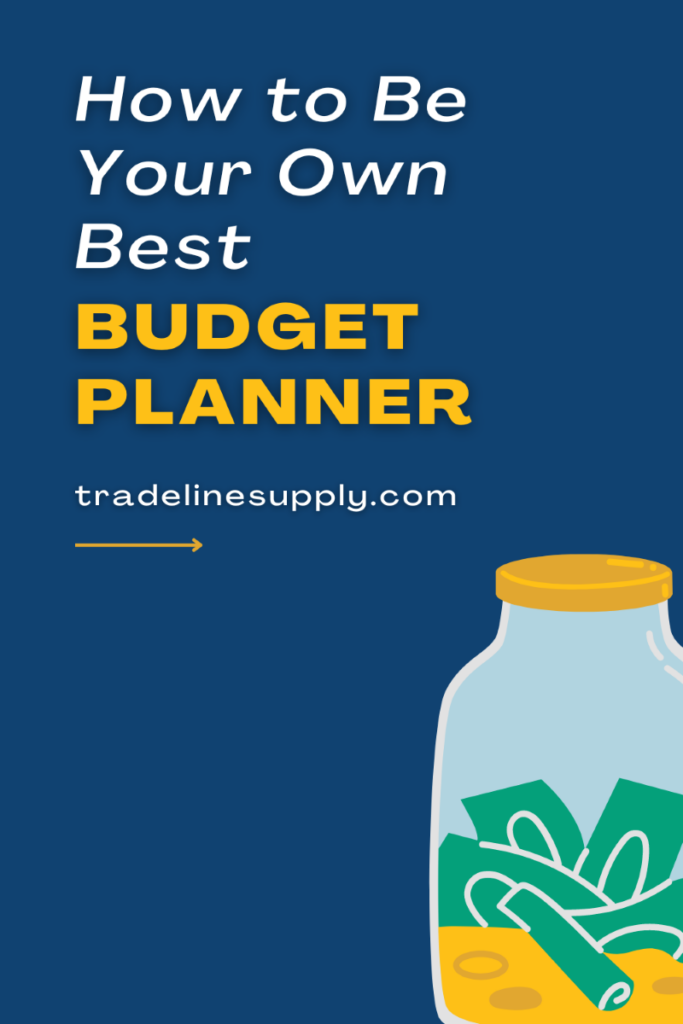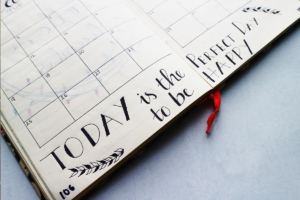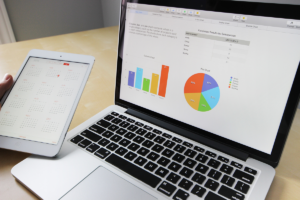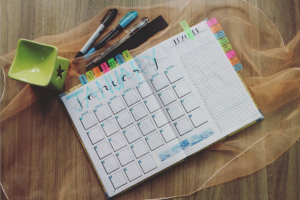How to Be Your Own Best Budget Planner

What Does It Mean to Be Credit Invisible?
03/24/2024
VantageScore vs. FICO Score: What’s the Difference?
04/07/2024
Have you ever thought that budgeting just isn’t for you? If so, you’re not alone. Many feel that budgets are too restrictive or find budget planning to be a chore—but it doesn’t have to be. Let’s explore how to determine which budgeting method makes sense for you and how to customize your budget to fit your finances.
What Is a Budget?
A budget is a tool that you use to manage your money. Usually, a budget is balanced between income and expenses so that you know where all your money is going. Some budgets are short term, like if you’re saving for something like a new computer, and some are longer term, like if you plan to buy a house. Either way, they help you achieve your financial goals and protect you from financial stress.
It doesn’t matter how you choose to budget, but you do want to make a budget (and stick to it, which is the hard part). You could list out all your expenditures separately and budget for each one, or you could group purchases into categories and give yourself a spending limit for each category. There’s absolutely no wrong way to budget as long as it works for you.
Why Are Budgets Important?
Budgets are important because they are meant to keep you from overspending. Following a budget allows you to make decisions that best fit your lifestyle and money situation. They’re the framework for financial independence. Financial independence is when you’re able to rely on yourself for all your financial needs. Some people say that you can’t do this until you’ve saved enough to retire, and other people claim that as long as you’re squirreling away money, you’re financially independent. Either way, budgeting is the tool to get you there.
Budgeting also helps you leave toxic situations. If you’re in a bad workplace environment or you get laid off, you can fall back on the money you’ve saved and find someplace else to work.
If you have an unexpected expense come up, you can pay for it with savings or adjust your budget to pay off a loan if you have to take one out.
Regardless of the financial situation you find yourself in, budgets are the roadmap that will lead you where you want to go. You wouldn’t go hiking without a map, or on a trip without a GPS. You don’t want to leave your financial journey up to fate either.
What Kinds of Budgets Are There?
Budgeting is personal, and no budget is wrong or right, as long as it’s working for you. You may have to experiment to find a budget that fits your lifestyle. Some people like to know where each cent is going. Personally, I would hate to have to account for each cent at the beginning of the month, so obviously that budgeting style wouldn’t work for me. Instead, I put money into savings first, then bills second, and the rest is fun money. At the end of the pay period, whatever extra I have left over also goes into savings.
While there are many different ways to budget, these five are the most common.
1. Percentage-based (50/20/30 Method)
This is a very popular budgeting method, and similar to the one that I use and described above. Elizabeth Warren popularized it in her book, “All Your Worth: The Ultimate Lifetime Money Plan.” It goes like this: 80% of your money goes towards living expenses and 20% of your money goes towards savings (and debt payoff, if applicable). Other people break it down even more specifically and say that 50% of their money goes towards needs, 30% goes towards wants, and 20% goes towards savings and debt.
For this budgeting method to work, you need to track your spending and ensure you’re staying within those percentages. If you’re not, you need to adjust your spending to make it aligned with the percentages laid out.
But let’s say you are saving for a house, and 20% isn’t enough. In this case, you can change the percentages to meet your needs. For that, you might want to put 50% to your needs, 20% to your wants, and 30% towards savings.
It all depends on what your short and long term goals are. This is my personal favorite budgeting method because I can choose what I want to spend on every month without worrying that I’m going to go over in a specific category. It’s great for people like me, who can be absent-minded with their spending but generally spend within their means.
If you don’t tend to spend within your means, then this budget might not be for you.
2. Values-based Budgeting
Values-based budgeting is a different way to approach your budget. It’s usually layered on top of another budgeting method. You set this budget up first by having a conversation with yourself about what’s important to you. Get specific. For instance, one of my priorities is feeding myself. I don’t always eat well or enough, so I allow myself to spend money on fast food if I’ve forgotten to eat. But I limit that amount to $100 per month. And I pack a lunch to take to work every day, even when my coworkers eat out.
Then you want to ask yourself an even harder question. Am I spending by my values? Comb through your last two months of bank statements and list out all your purchases along with all their categories. You can’t change some things like mortgages or rent, so even though you might not value spending $1200 to keep the lights on and a roof over your head, it’s still important. Instead, look at your discretionary spending. Once you have your list, cross out every discretionary purchase that you didn’t value or didn’t enjoy spending money on. How much money could you save without those low-value purchases?
After that, it’s all about living by your values. Before purchases, ask yourself, does this fit my values? If it does, and you can afford it, buy it. If it doesn’t, skip it and put that money toward savings or something that you do value.
3. Budget to Zero (Zero-based Budgeting)
This budgeting method is when you set up your budget so that your income minus your expenses equals zero. Every dollar has a purpose and you know where each dollar is going. I’ll be honest, I hate this method of budgeting because it feels very restrictive to me, but my best friend loves this method. She says it keeps her organized when she knows exactly where her money is going down to the penny.
To set up this budget, you’ll want to list your monthly income and then list all of your expenses, including savings, debt repayment, and investing. If your income minus your expenses equals zero, you’re on the right track.
Some experts who use this method recommend setting up a new budget every month to handle yearly expenses. For example, I pay my phone bill once a year, in November. If I used this method of budgeting, I’d plan out November to include that phone bill, which would mean moving around some dollars from other categories so the total stays at zero.
While I find it helpful to do money check-ins every month, planning out a whole new budget is a bit excessive, in my opinion. What I do instead is set aside $30 a month to pay my bill in November, and when it’s due, I pay it out of savings that I’ve set aside for it. That way I’m not operating on a smaller budget than usual at that time.

If you decide to use this method, you need to track your expenses as precisely as possible. The more you’re accountable for your money, the faster you’ll reach your goals. And this method is great for that because you know exactly where each cent is going.
4. Pay Yourself First
I love this method because it focuses on saving and investing as your top priorities and everything else is secondary to those things. I find that to be highly motivating, especially if I’m saving for a large goal that feels daunting. I used this method when I first started budgeting, and still do sometimes if I feel I’m slacking with saving.
Paying yourself first means you set aside money for your own savings goals first and then use the rest to pay for expenses.
This method works because you can’t spend what you don’t have. And if your money is going into savings, it’s not as easy to spend it.
However, you need to figure out how much money you can set aside. Start with something small, like $20 to $50 a paycheck. Or you could base it on percentages. While the ideal situation is to save closer to 15% or 20%, starting lower and building up allows you to practice your savings muscle. Ultimately, base it on what you can afford, not on what someone from the internet tells you to do.
Set up automatic transfers to your savings account. This is key. If you don’t see the money in your checking account, you’re more likely to actually save it. If you have multiple goals, you can set up multiple automatic transfers. Right now, I’m saving for retirement (which you should be, too, if you haven’t started), a house, and repaying my car loan (which doesn’t count as savings, but I have a goal to pay off $13,000 in six months). You could have your own categories, and different money “buckets” for each. Some common ones are retirement, investing, debt repayment, or a short-term or long-term savings goal.
Then create your budget for expenses with the money you have left. You can use any of the budget methods here to do that.

5. Envelope Budgeting
If you’re “bad with money”, like I can be sometimes, then this budgeting system is for you. You set up automatic transfers for all your fixed expenses, like your rent, utilities, student loans, etc. And then the rest of your paycheck you take out in cash and put it into separate envelopes for different categories of purchases. For example, if you only want to spend $50 on dining out, then only put $50 in your dining out envelope. Once your envelope runs out, you can no longer spend from it. It’s best to get specific with these categories for this method to work well. Some of the categories I use are:
- Sports activities
- Groceries
- Eating out
- Gas
- Clothing
- Personal care
- Miscellaneous
You’ll want to look back on your spending for a quarter to determine what categories are right for you. For me, I spend a lot on horseback riding and gas, so I know those need to have their own categories and not be part of the miscellaneous category. But my random Amazon spending, which happens once in a blue moon, can be put into the miscellaneous category.
This is the method I used when I was learning budgeting, and while I’ve outgrown it (I don’t spend as much as I used to and can be trusted with a debit card now), I still think it’s a good method.
One of the biggest perks of this strategy is that it stops you from overspending because you can only use the cash that you have in the envelope.
How Do You Choose a Budget That’s Right for You?
To get to the core of budgeting, I spoke to Athena Valentine Lent, budgeting coach and author of Budgeting for Dummies, who had great advice. She said, “There are so many different budgeting styles out there that people don’t even know about. The first step is being realistic about how much attention you want to give your money, or how big are your financial goals?”
That’s a great question because it forces you to pause and think about what you want out of your budget. I don’t like to spend a lot of time on money, so I don’t have a super detailed budget. I save what I want and spend what I need to. Plus I have a little left over. For others, that approach wouldn’t work. She recommended the following: “If you want a more relaxed approach, the pay-yourself-first method is a great start. If you really want your money to work for you, try zero-based budgeting.”
Again, there’s no wrong style of budgeting. It’s about what fits your needs. I tried 3-5 different methods before I settled on a combination of paying myself first and the 50/30/20 method. (Although I save more than 20% of my money because I have audacious goals).
What to Do if Your Budget Isn’t Working
Lent also had great advice for retooling your budget: “If your budget isn’t working, it’s usually one of two things: Your cash flow doesn’t cover your expenses or you need to try out a different budgeting method.” This is a great place to start. Check to ensure that your cash flow is covering all of your expenses. If it isn’t, then you might need to cut back on some frivolous spending. If your budget isn’t able to cover your basic needs, then you should seek help and look for ways to increase your income. But if it’s a spending issue, we can work with that.
Lent continues, “People tend to dream big when starting a budget, which you should absolutely do, but you should also keep in mind how much you’re currently spending and either cut back gradually or figure out a way to earn more.” The key here is consistency. If you’re not consistent, nothing is going to change. But you don’t have to do everything all at once. Lent loves a gradual approach to changing your budget because changing your budget means changing your lifestyle, and that is hard.
If you’ve done that, and it’s still not working, Lent recommends trying a different budgeting method to see if it fits your lifestyle better.
How to Keep Your Budget on Track Throughout the Month
I’m going to let you in on a little secret. I use an app to track my spending. Rocket Money is the app that I use, but there are a lot of options. Lent even has a whole section of her book devoted to using apps to track your spending.
Apps are great because they take out the effort of writing everything down by hand, and if you’re like me and have ADHD, that’s a huge motivator to actually categorize your money. Otherwise, there’s no way I’d be able to do it. And it’s okay if you need help too. The idea is that you’re getting your budget figured out. Not that you’re doing it the “correct” way. Because let’s be honest, there’s not a single correct way.
At the end of our interview, Lent told me, “Budgeting doesn’t have to be miserable. I’m a firm believer that budgeting is a core foundation block to your financial house. If you put your money to work for you instead of it telling you where to go, you’ll be able to get your finances to a place you never imagined.”Good luck on your budgeting journey! Let us know how you feel about budgeting in the comments below.







2 Comments
Great Article. Im starting my budgeting Journey. Im doing zero based and cash envelope stuffing. Im learning. I have had some hiccups but i won’t stop till i get it.
Sounds like you’re off to a great start! Thank you for reading!